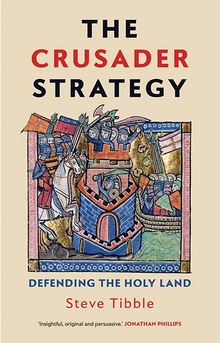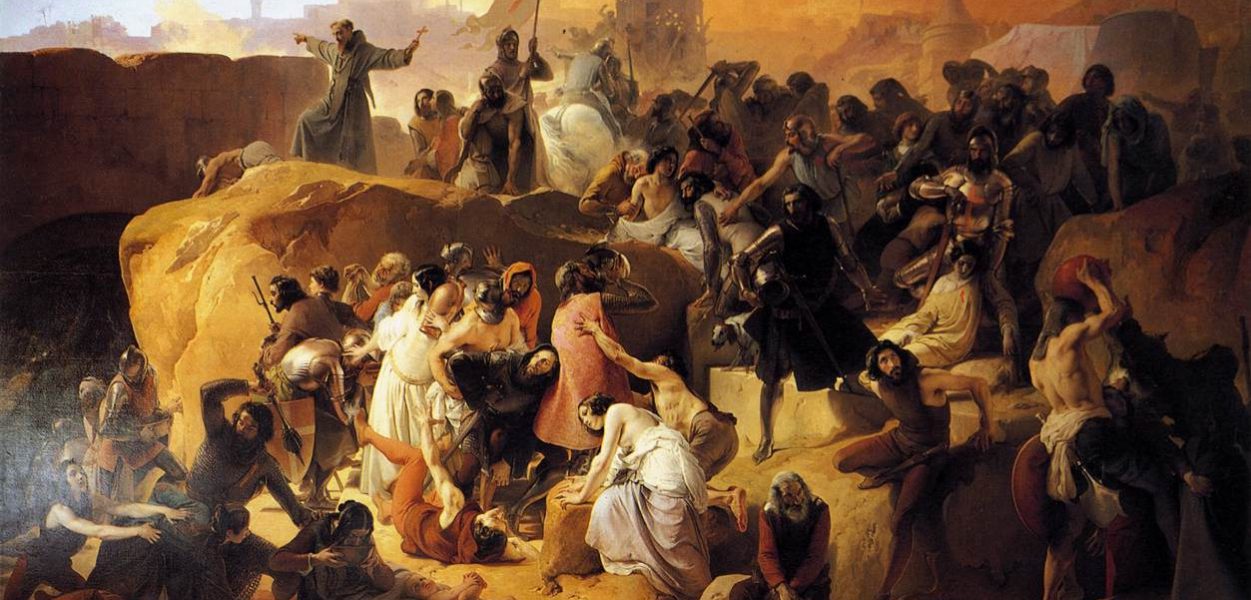Medieval Strategy? Do Fish Need Bicycles?
Steve Tibble—
It is easy to see medieval warfare and politics as being long on activity, but chronically short on reflection. To misquote the 1970s feminist rallying cry, it is pretty obvious that hairy, unwashed medieval warriors needed strategy every bit as much as a fish needs a bicycle. Or at least that is what we often assume.
Contemporary chronicles, and most modern narrative accounts of medieval history, read more like a soap opera than a strategic planning document. Armies invade and fight. The warrior elite have their moments of glory or disappointment, a stream of celebrities wandering across the stage of history with chroniclers as their paparazzi. Not entirely aimless perhaps, but implicitly lacking in what we would now describe as any form of strategic direction.
We believe we are good at “strategy” because we use—and misuse—the word a lot. Modern governments, their generals, and their PR teams all talk a lot about strategy. But talk is cheap. Actions are always more powerful and far more telling.
In the crusader states, on the contrary, where the resources and structures for planning and communication were in chronically short supply, there was far less talk of strategy. If we care to look for it, however, it is surprisingly evident in the activities of most of the major players. We find this evidence through deconstructing actions on the ground and establishing patterns of behavior.
Of course, there are no surviving “strategy” documents, no memos or irritating Friday afternoon meeting notes from the crusader states. Probably, in the modern sense at least, there were never any formal strategy documents in the first place. But there is an abundance of evidence to show that planning took place and that the development of long-term strategies was a direct consequence of those plans—they enacted strategy in an intuitive but often surprisingly subtle way.
One, well hidden, example of this lies in the development of a “coastal strategy” by the crusaders.
Capturing Jerusalem, the extraordinary culmination of the First Crusade, was always a beginning rather than an end. Landlocked, under-populated, and barely self-sufficient, everyone knew that the Holy City was almost indefensible.
Fundamentally, if the crusade was to be anything more than just a one-off hugely violent act of pilgrimage, the crusaders needed to focus on quickly taking control of the entire coastline of Syria and Palestine and all its heavily fortified cities—without a constant flow of reinforcements and money, the isolated new Christian states would quickly be wiped out.
So the logic behind the coastal strategy was clear. But they also needed to be able to roll out this strategy in practice. For embryonic states, with no fleets of their own and only tiny armies, this would never be easy—the crusaders needed Italian naval support, and that support duly arrived.
But did any of this really constitute “strategy” in any meaningful use of the word? Did it involve long-term planning? Or did the Italian squadrons that made it all possible simply turn up because they happened to be in the area, cruising for commercial opportunity?
A cursory reading of the chronicles certainly gives the impression that the fleets appeared in an entirely fortuitous way. But the timing of their expeditions was never coincidental. Their presence was the culmination of extensive diplomatic activity carried out by the crusader states to further their own strategic objectives.
Irritatingly from a historian’s perspective, the oral nature of this diplomacy, and the inevitable disappearance of most of the written records, means that hard evidence of strategy and long-term diplomatic initiatives is scarce. The Venetian crusade of 1122–1124, however, provides a fascinating case study of how this process played out in practice.
On the surface, this was a very typical—and typically fortuitous—intervention. In writing of the arrival of the Italian fleet, Fulcher of Chartres makes the expedition sound like a splendid surprise—“we were delighted to hear,” he wrote, “that a fleet of Venetians had entered many of the ports of Palestine.” Its movements, he implied, had been the object of gossip rather than planning, as “rumour had for a long time foretold its arrival.” William of Tyre makes a similarly rather bland introduction, merely stating that the Venetians “had learned of the straits in which the kingdom of the East was placed and had ordered a fleet to be made ready.”
It is only by accident that evidence for the far more complex nature of the Venetian crusade has survived. As well as writing about the arrival of the fleet, William lazily decided to quote the agreement with the Venetians in full. With the survival of the complete legal document, it suddenly becomes clear that everyone was skating over much more prosaic issues—the planning and strategy that had made it all possible.
In fact, preparations had been in train for a full five years before Tyre fell. In the aftermath of the disastrous battle at Ager Sanguinis (Field of Blood) in 1119, an assembly was held in Antioch that decided to send word to the West, asking for help. These issues were also discussed at length in another assembly in Nablus in January of 1120. One important outcome of the discussions was to send embassies to the papacy and to the Venetians, asking for help.
The papal curia sprang into action, or at least as much as medieval bureaucracies were ever capable of “springing” into anything. By the autumn of 1120, initial exchanges were under way with the Venetians, and by the summer of 1121 plans for the crusade were proceeding apace.
Pope Calixtus issued a formal crusade letter to the Venetians, and the expedition was discussed at the First Lateran Council. A broad appeal was also made to other potential sources of military aid, and it is likely that the crusade eventually contained participants from many parts of Europe, including Germany and France, as well as Venice and (possibly) an additional naval squadron from Genoa.
So, far from being a random or fortuitous event, we find out in a chronicle (and even then only as an accidental aside) that the Franks had been sending letters to Venice long in advance of the expedition, making detailed proposals for its objectives and the rewards that might be forthcoming, carried by a series of envoys.
The crusaders’ coastal strategy was hugely successful—but it was only the chance survival of a single legal document that shows it was a success borne out of planning rather than coincidence.
We often think we are the masters of strategy—but despite occasional appearances to the contrary, crusader military decision making was rarely “random.” Strategy was certainly being enacted in medieval states, if we only care to look for it.
Steve Tibble graduated from Cambridge and London Universities and is honorary research associate at Royal Holloway, University of London. He is the author of Monarchy and Lordships in the Latin Kingdom of Jerusalem, 1099–1291 and The Crusader Armies, 1099–1187.
Further Reading:



























